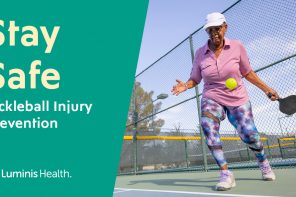Falls Prevention Awareness Week is Sept. 21-25. According to the U.S. Centers for Disease Control and Prevention:
- One in four Americans ages 65 and older falls each year.
- Every 11 seconds, an older adult receives treatment in the emergency room for a fall.
- Every 19 minutes, an older adult dies from a fall.
- Falls are the leading cause of fatal injury. They most common cause of nonfatal trauma-related hospital admissions among older adults.
As we age, our homes provide new challenges and obstacles. These challenges and obstacles remain unseen until a problem arises. Our bodies also undergo subtle (or not so subtle) changes that create a fall risk. Even in our own home.
Our homes are our castles and should be places that are safe and comfortable regardless of any physical limitations. Most people prefer to stay in their homes as they age, but are unsure of how to make changes if/when needed. When faced with mobility or cognitive changes or decline, the preference to stay at home may not remain realistic without adapting the current living environment.
Here are some tips and tools to reduce the risk of falling at home and improve your ease of mobility.
- Clear walking pathways: Remove cords, papers, shoes, pet toys and laundry from your walking paths. Also, be aware of slippery surfaces and spills on the floor. Clean up or cover up a spill immediately.
- Beware of uneven surfaces in your home: Changes in flooring surfaces and sunken living areas that are not highly contrasted are easy to miss. You may fall and trip on these surfaces. Highlight steps with lighting or color striping. Work with a contractor to eliminate transition strips from carpet to tile. Even throw rugs, if not secured, are enough of an uneven surface to trip you.
- Add good lighting inside and outside your home: Dark hallways, poorly lit closets, stairs without lighting, doors to enter/exit the home and outside walkways without lighting increase your risk for falling. Home improvement stores have many lighting options to resolve this problem.
- Add supports in the bathroom: Consider adding grab bars next to your toilets as you enter or exit your shower. There are many fashionable options available at home improvement stores and various online vendors.
- Make your stairs safe: If you must navigate stairs to enter/exit your home or within your home, please use a well-installed railing for the full length of the stairs. It is best to install two railings if possible and have stairs carpeted. Stairs that are chipped, crumbling or with loose railings are risky. Please get these repaired.
- Organize frequently used items at home within your reach: Remember what your “strike zone” looked like playing baseball or softball? This is the zone you should store your most frequently used items. Getting up and down from the floor or using ladders in the home can prove difficult so, if you are unsteady, make these changes ASAP.
- Read the AARP HomeFit Guide: AARP has an online and printed edition guiding you on a room-by-room, area-by-area home inspection to identify fall risks and provide solutions for these risks. Visit the AARP website for details.
At Anne Arundel Medical Center, we have a specialized fall prevention program. We send specially trained clinicians to your home to provide feedback on how to optimize the safety of your home while preserving the components that you love. Next, we recommend a follow-up appointment in our outpatient clinics. At our outpatient clinics, we provide intervention to minimize the risk of falls. All steps are designed so you return home with a program tailored to your specific needs to continue to maintain a lifestyle to lower your risk of falls. Our goal is to help our loved ones age in place. This allows them to live their life in the home they love.




